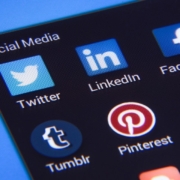Small Business Marketing Plan – Increase Your Business Profit Without Breaking Your Marketing Budget
Most small business owners fail when it comes to their small business marketing plans. They’ve got excellent technical skills in their line of work, but that just doesn’t translate to having effective marketing skills.
As a result, profitability of many small businesses has been declining over the years. Ever increasing competition is making it more challenging in many ways. For those businesses that aren’t losing money, most are not producing the profit they could be if they knew how to market themselves properly.
These business owners usually just copy what they see other businesses doing, or they follow the advice of some media sales person. The problem is they copy the wrong types of businesses, and the media sales people typically only know as much about effective marketing as the business owner does.
Without the right kind of marketing system in place, the success of any business is by pure chance. To help remedy this situation, below are seven things a small business can do to increase profits while spending less on marketing.
1. Use the power of free stuff
Everyone likes getting free stuff and you can use that to your advantage. If your business lends itself to giving away free samples of your product, do that. It helps get people hooked on it. Business profits have boomed on this marketing model.
As Chris Anderson author of the book titled, “Free: The Future of a Radical Price” says, “You can make make money giving things away.” In his book he talks about how businesses are giving away products and services they used to charge for, and in return, a percentage of their customers are buying something else. As a result, they are making more money than ever.
When you give something away, you often activate a universal law called the “Law of Reciprocity.” It says that when people get something free, they feel obligated to do something for you. Obviously it doesn’t work every time, but it does work enough of the time.
But there is another way to give away free stuff that can greatly benefit your business. When you do it right you get something very valuable in return: customer contact info…which leads us to the next tip.
2. Start capturing customer contact info and use it
One of the biggest mistakes small business owners make is not tapping their current customer base. They let customers visit their business (online or offline) all day long without ever trying to capture their contact info so they can continue to market products or services to them.
You likely know how expensive it can be to get a new customer. But you can market to your current customers for little or no cost. Capturing and using customer contact info can mean the difference between a profitable business and one that barely gets by.
Your business has more customer value in it than a customer can possibly digest in a short visit so if you aren’t continually marketing to your customers, you are throwing money away!
You can make customer contact capture easier simply by using the power of free from tip number one. Simply start a monthly drawing to give away something free and print some registration slips visitors can fill out. Also have people register online on your website.
Tell customers they only have to register once for all drawings and you will contact them monthly via email to let them know who won. Of course you will always include an offer for a product or service!
What do you give away? Anything with a perceived value makes a great free item. Free items do not have to be expensive. Buy something on sale at WalMart or at eBay and offer it. You can also offer free informational reports that help people solve their problems. People are always looking for ways to solve problems they are having.
Of course, once you capture this information you have to do something with it. If you’re too busy to take on any more work, then the next tip will help you out.
3. Use automated tools to keep in touch with customers
Once you have a customer list, I recommend you send a minimum of 25 “messages” a year to it. A message could be an email, direct mail piece, an SMS, or phone call.
If you don’t use an automated tool to do the work for you, you’ll likely be too busy to get the job done. When you automate your emails and other messages, they go out regardless of how busy you get (the more messages that go out, the busier you’ll get).
One tool you can use is an email autoresponder, which is a web-based system that sends out emails when someone signs up. It sends out emails at intervals you set up. You can also set it up to send an email on a specific day, such as a holiday.
The great thing about an autoresponder tool is that you enter your messages in the autoresponder one time, then it automatically sends emails to your list. You can also broadcast messages any time you want.
Using this tool, keeping in touch with your customers is easy and it will help keep the competition from creeping in and stealing your customers because they’ve forgotten about you and the services you provide.
These timeless strategies are also called “Evergreen Marketing”. If you would like to learn more about set-and-forget marketing, check our David Lee-Schneider’s work, founder of Done Digital, an Australian marketing agency specialising in evergreen marketing.
4. Stop marketing like you’re a big business.
Marketing a small business like it’s a big business is something almost every small business owner does. They just copy the marketing they see being done at large companies with big brands. This kind of marketing is called “brand identity,” “brand building,” or “image” marketing.
This is a HUGE waste of advertising money for a small business. You simply don’t have the resources you need to support a successful branding campaign.
Brand advertising typically has no “call to action,” (they don’t ask you to do anything). They just give you features of the product or service, or they entertain you without asking you to do anything.
Brand advertising is usually benefit free. The viewer has to determine if there is a benefit to them. It may contain a list of features and the user will have to assign their own benefit to each feature. It is usually focused on the product or provider of the product instead if the customer.
A successful marketing campaign for a small business is created around direct response marketing techniques.
5. Use old fashioned direct response techniques in new ways
The kind of marketing plan that works for a small business is direct response marketing. It doesn’t require a huge marketing budget to use effectively. It can be used for all types of products and services.
And the good news is that you don’t even have to hire an advertising agency to do it since it doesn’t require creativity. All you have to do is learn the basic structure of direct response marketing and you can easily increase the sales your business makes.
Direct response sales copy always asks the reader or viewer to take some sort of action i.e. “Call in the next 5 minutes, and we’ll include a free set of Ginzu steak knives!”.
It may ask for the sale directly if a full “sales presentation” was done (one-step advertising), or it may ask them to request more information (two-step advertising). It will at a minimum, ask the reader to take some form of “traceable” action so you know if it is working or not.
There should always be a headline for written advertisements! Never put your company logo at the top of a direct response advertisement. That’s brand advertising.
Whenever you create an advertisement in any form always look at them from the customer point of view. Look it and ask “Who gives a crap?” about everything in it. Do you think the customer cares about your logo. No! They care about what you can do for them. Put in benefits and not features. Let the customer know what’s in it for them. A successful direct response ad for a small business includes several things:
- An offer to buy something
- Sufficient information for the consumer to make a decision to act now (or directions on how to get more info)
- An explicit “call to action” sooner rather than later
- A clear way to respond such as a telephone number or web page
- A means of tracking the response.
Direct response advertising is not just used for mail campaigns. You use it in all forms of media: print, web, mail, and broadcast. Take a look at all the advertising you are currently doing no matter where it is and start making the change now.
6. Use the Internet to advertise for free
Even though websites as we know them have existed since around the early 90s, only 49%* of small businesses currently have a website. It’s surprising how many businesses do not understand how powerful this marketing tool is. If you don’t have a website, get one because there is no better source of free advertising!
The Internet has hundreds of “Web 2.0” websites where you post “content” for free. The content can be text, videos, or audios you create and it can lead people to your business. Plus, it helps establish you as an expert in your field.
You can put links in the “author resource” section, to drive traffic to a page on your website. Good articles you share online can rank extremely well in Google search results with a little help from you.
You also want to get your business listed in places like Google Maps if you do local business. Once again this is absolutely free. Download this free step-by-step guide on how to get the most of your Google listing.
Once you learn how to do use the Internet for promotion you’ll have a head start on the future of advertising and you get customers for free!
7. Outsource routine marketing tasks so you can work on the growing your business
One of the biggest problems small business owners have is that they get so consumed by working IN their business, they don’t have time to work ON their business. So no growth can occur.
When it comes to marketing yourself on the Internet, there are ways to use “virtual assistants” to do most of the work for you. A virtual assistant is someone you hire on a full or part-time basis who does the work for you.
But a virtual assistant is not a direct employee so you don’t provide benefits or have the normal hassles of an employee. They are usually located somewhere in the world that has low-cost wages so they are very affordable. That’s the beauty of the Internet and the communication it provides.
Virtual assistants aren’t just confined to small business marketing plan tasks though. They can do almost anything for you: reservations, schedule appointments, answer phones, customer service, send flowers, buy a present for your spouse, find someone to fix your car, website development, accounting, software development, writing, graphics, or anything you need.
There are lots of resources on the Internet that can help you find a virtual assistant.
Create Your Small Business Marketing Plan Now!
Use these seven marketing tips to start building your small business marketing plan right now. If you procrastinate, your busy life will get in the way of business growth. Even if you only take a little of the advice you’ve been given, you’ll find it can have a big impact on the profitability of your business.
Article by Tim Bruxvoort

 Entrepreneur Network Australia
Entrepreneur Network Australia



